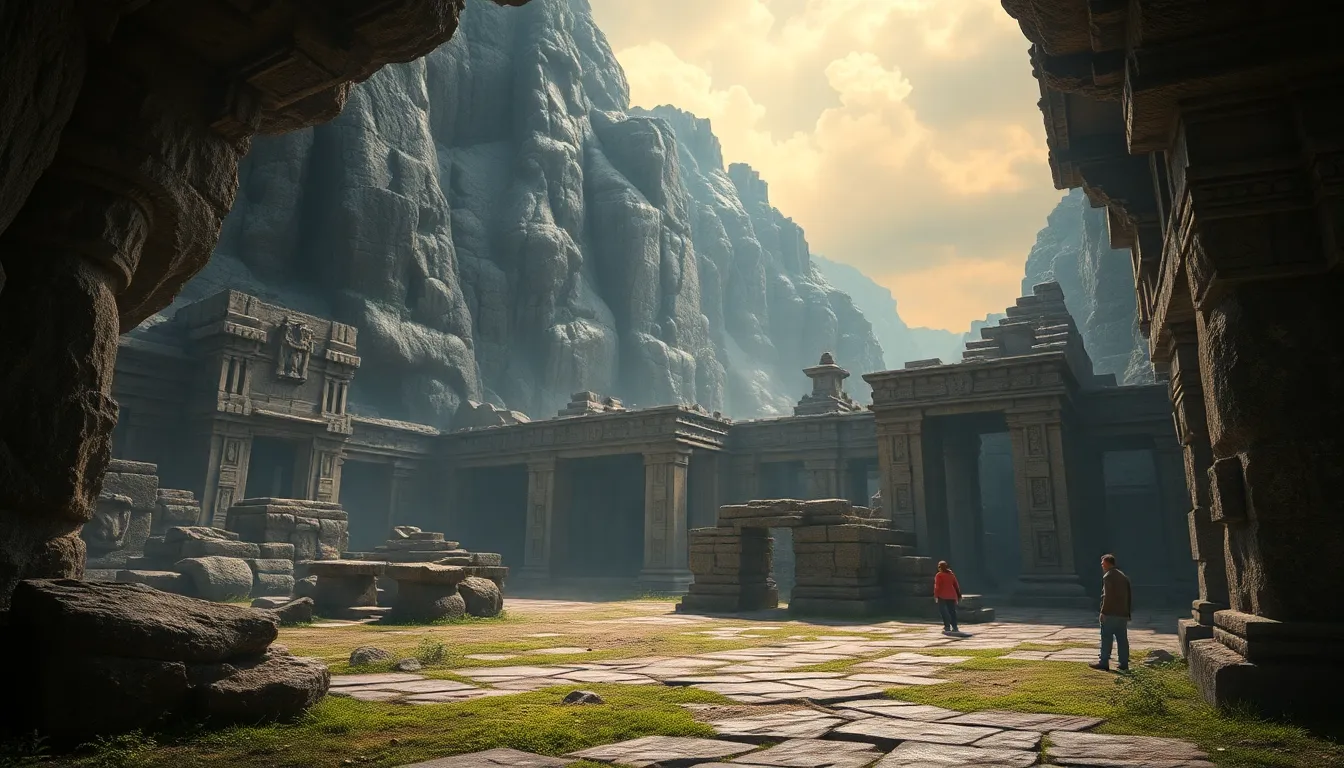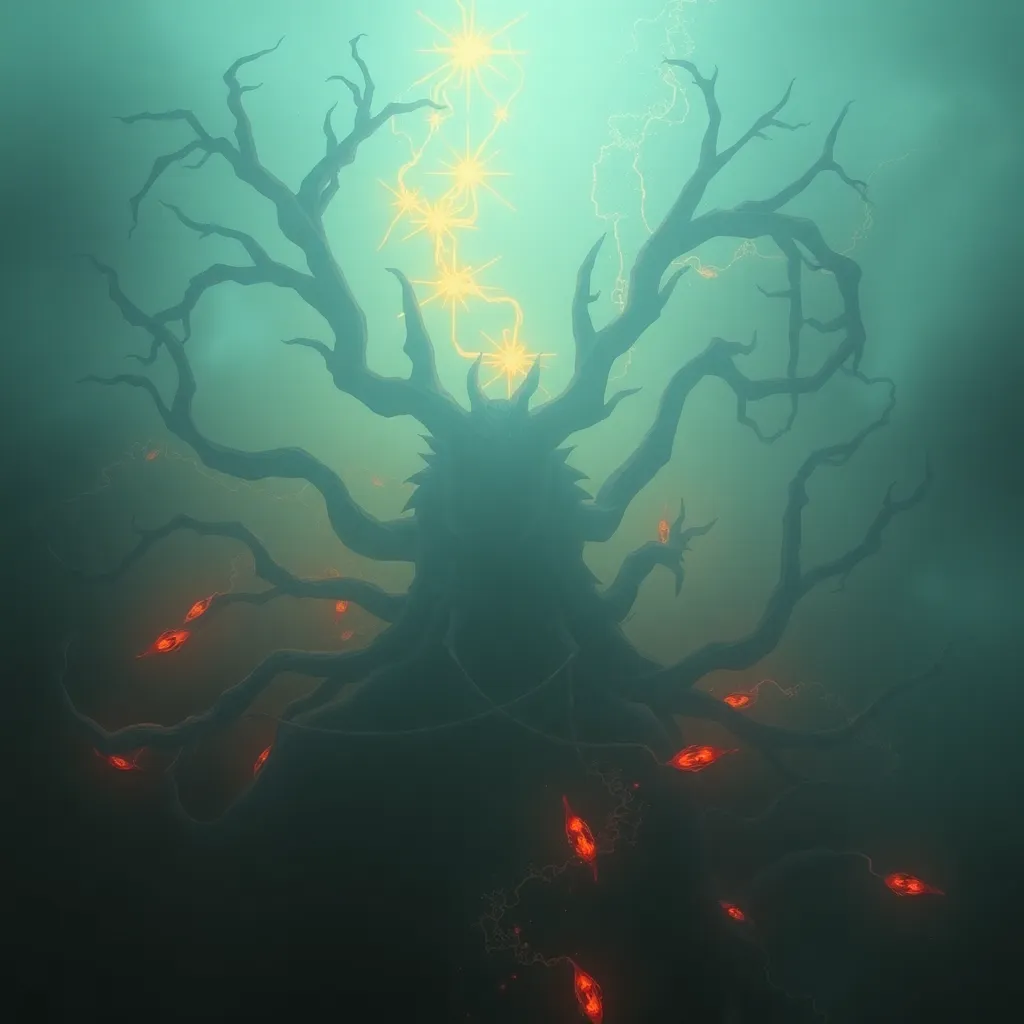Thai Mythology: Where Stories Come Alive
The Genesis of Thai Mythology: Ancient Origins and Influences
Thai mythology, a rich tapestry of ancient beliefs and stories, reaches back to the very origins of Thai culture. It is a fascinating blend of diverse influences, showcasing a unique cultural identity shaped over millennia. The earliest known stories were likely passed down orally, shaped by the interactions of ancient Thai people with their environment and the surrounding world.
A key influence on Thai mythology is the ancient Hindu pantheon, brought to Southeast Asia through trade routes and cultural exchanges. This introduced deities like Brahma, Vishnu, and Shiva, shaping the Thai understanding of the universe, creation, and the cosmic order. Elements of animism, deeply rooted in the belief that spirits inhabit everything from trees and rocks to mountains and rivers, also played a significant role. This animistic worldview gave rise to numerous folk tales and beliefs about nature spirits and supernatural beings, contributing to the vibrant tapestry of Thai mythology.
The arrival of Buddhism in Thailand further enriched its mythology. Theravada Buddhism, the dominant form of Buddhism in Thailand, brought with it stories of the Buddha, his teachings, and the concept of karma and rebirth. While distinct from the traditional Hindu beliefs, Buddhism integrated seamlessly with existing Thai mythology, adding depth and complexity to the existing narrative.
The Role of Storytelling in Thai Culture: A Tapestry of Legends and Beliefs
In Thai culture, storytelling is not just a form of entertainment but a vital avenue for transmitting knowledge, values, and beliefs across generations. Through these stories, the Thai people have preserved their cultural heritage, understanding of the world, and their connection to the divine.
These tales are more than just narratives; they are living expressions of Thai identity, encapsulating their hopes, fears, aspirations, and their understanding of the natural world. Mythology acts as a powerful force in shaping Thai values, such as respect for elders, reverence for nature, and the pursuit of wisdom and virtue.
Each story serves as a microcosm of the larger Thai worldview, revealing the complexities of human nature and the interconnectedness of life. These stories teach valuable lessons about morality, justice, courage, and the consequences of choices. Through these narratives, Thais learn to navigate the complexities of life, understand their place in the universe, and strive for a life of righteousness and harmony.
Gods and Goddesses: A Pantheon of Powerful Beings
The Thai pantheon is a diverse and fascinating assembly of gods and goddesses, each possessing unique powers and embodying specific aspects of the universe. These divine beings are often portrayed with human-like qualities, reflecting the complexities of human nature and the ever-present struggle between good and evil.
One of the most prominent figures in Thai mythology is Phra Phrom, the creator god, embodying the principles of creation and order. He is often depicted with four faces, symbolizing his complete awareness of all aspects of existence. Another important figure is Phra Narai, the preserver god, representing strength, wisdom, and the cosmic balance. He is often portrayed as a warrior, symbolizing his role in protecting the universe from chaos.
The female deities, such as Phra Mae Thorani, the earth goddess, and Phra Mae Ganga the river goddess, embody the nurturing and life-giving forces of nature. These goddesses are revered for their compassion and ability to provide sustenance and prosperity. The pantheon also includes many lesser deities associated with specific elements, professions, or aspects of daily life, reflecting the intricate interconnectedness of the Thai worldview.
Epic Tales of Heroes and Villains: Exploring Morality and Fate
Thai mythology is brimming with epic tales of heroes and villains, each narrative offering a glimpse into the Thai understanding of morality, destiny, and the consequences of actions. These stories often feature legendary figures who embody virtues like courage, loyalty, and selflessness.
One such tale is the epic story of Phra Apai Mani, a courageous prince who embarks on a perilous journey to rescue his beloved sister from a monstrous demon. The hero's bravery and determination in the face of adversity highlight the importance of fighting for what is right, even in the face of overwhelming odds.
Another epic tale, the story of Khun Chang Khun Phaen, explores themes of love, betrayal, and revenge, showcasing the complexities of human relationships and the dangers of unchecked emotions. Through these stories, Thais are taught the importance of making wise choices, understanding the consequences of their actions, and the power of forgiveness and compassion.
Supernatural Beings and Creatures: From Demons to Dragons
Thai mythology is populated by a cast of fascinating supernatural beings and creatures, adding an element of wonder and magic to the stories. These mythical beings often represent different aspects of nature or embody various human qualities, often serving as powerful symbols for the forces at play in the universe.
One of the most iconic figures is Naga, the serpent deity, often depicted as a giant serpent with multiple heads, possessing magical powers and guarding hidden treasures. The Naga embodies both the beauty and the danger of the natural world. These mythical serpents are often associated with water and are seen as protectors of rivers, lakes, and the ocean.
Other prominent creatures include Yak, monstrous demons who embody chaos and destruction, and Kinnara, mythical beings with the head and upper body of a human and the body of a bird, symbolizing divine wisdom and celestial harmony. The presence of these supernatural beings adds a layer of intrigue and mystery to Thai mythology, further enriching the stories and offering a glimpse into the Thai understanding of the unseen world.
The Power of Symbolism and Metaphor: Unveiling Deeper Meanings
Thai mythology is not just a collection of fantastical stories; it is a rich tapestry of symbolism and metaphor, offering profound insights into the human condition and the workings of the universe. Each element of a story, from the characters to the creatures and the settings, carries a deeper meaning, enriching the narrative and providing a framework for understanding the Thai worldview.
For example, the Naga, the serpent deity, is often portrayed as a guardian of hidden treasure and knowledge, symbolizing the power of nature and the importance of respect for the natural world. The Yak, the monstrous demon, represents chaos and destruction, highlighting the destructive potential of unchecked negative emotions.
The use of animals and plants also holds significant symbolic meaning. The elephant, often representing strength, wisdom, and royalty, is a symbol of good fortune and prosperity. The Lotus flower, rising from the murky depths to blossom on the surface, symbolizes the purity of the soul and the potential for spiritual enlightenment.
Through these symbolic representations, Thai mythology explores complex concepts like the cycle of life and death, the interconnectedness of all beings, and the importance of balance and harmony in the universe. This intricate system of symbolism adds a layer of depth and meaning to the stories, making them relevant and engaging for audiences across generations.
Oral Tradition and the Transmission of Stories: From Generation to Generation
The transmission of Thai mythology has been deeply intertwined with oral tradition. For centuries, stories were passed down from generation to generation by word of mouth, ensuring the preservation of cultural heritage and knowledge. This oral tradition played a vital role in shaping the Thai identity and fostering a strong sense of community.
Skilled storytellers, often respected elders or village leaders, would gather around campfires, temple courtyards, or village squares, captivating audiences with their vivid descriptions and dramatic performances. Their ability to recall intricate details, elaborate on characters, and weave narratives imbued with emotions and wisdom ensured that the stories were not mere tales but powerful vehicles for teaching lessons and preserving cultural values.
These oral narratives were also influenced by the environment. The stories often incorporated elements of nature, reflecting the close relationship between the Thai people and their surroundings. The stories of spirits inhabiting trees, mountains, and rivers emphasized the importance of respecting the natural world and living in harmony with it.
The art of storytelling, passed down through generations, ensured the survival and evolution of Thai mythology, allowing it to adapt to changing times while retaining its core values. The stories themselves reflected the challenges, triumphs, and aspirations of the Thai people, serving as a constant reminder of their shared history and cultural identity.
The Influence of Buddhism and Hinduism on Thai Mythology
Thai mythology is a fascinating blend of Hindu and Buddhist influences. These two major world religions have profoundly impacted Thai culture, shaping their understanding of the universe, the afterlife, and the nature of reality.
Hinduism, with its rich pantheon of gods and goddesses, contributed elements of creation myths, deities associated with natural forces, and the concept of karma and reincarnation. The ancient Hindu pantheon, with figures like Brahma, Vishnu, and Shiva, found a place in Thai mythology, influencing the understanding of the cosmic order and the nature of the gods.
Buddhism, with its emphasis on the teachings of the Buddha, the concept of enlightenment, and the pursuit of virtue, further shaped the narrative landscape of Thai mythology. The stories of the Buddha’s life, his teachings, and the cycle of rebirth became intertwined with existing Thai mythology, adding a layer of spiritual depth and emphasizing the importance of ethical conduct and the pursuit of liberation.
While distinct, Hinduism and Buddhism co-existed within Thai mythology, offering a complex and nuanced worldview. This blend of beliefs, with its emphasis on the divine, the human condition, and the interconnectedness of all things, contributed to the rich tapestry of stories that continue to shape Thai culture today.
The Art of Storytelling: Performance, Music, and Visual Arts
The art of storytelling in Thai mythology is not confined to words alone; it is a vibrant and multifaceted performance art that encompasses music, dance, and visual arts. These elements further enhance the narrative, providing a multisensory experience that brings the stories to life.
Performance: Storytellers often use dramatic storytelling techniques, incorporating gestures, facial expressions, and voice modulation to amplify the emotions and experiences depicted in the narratives. Traditional puppet shows, featuring elaborately crafted puppets, are a cherished form of storytelling, bringing mythical characters and creatures to life.
Music and Dance: Thai music and dance play a crucial role in storytelling, adding layers of emotional depth and cultural context. Traditional instruments like the Khong Wong, a set of gongs, and the Ranat, a xylophone, are often used to create evocative soundtracks for storytelling performances, while classical dances like Khon and Lakhon Nai depict mythological narratives through movement and gestures. These performances are not just entertainment; they are rituals that connect the audience with the stories and the spiritual realm.
Visual Arts: Thai mythology is vividly portrayed in a variety of visual arts, including paintings, sculptures, and architecture. Temples adorned with elaborate murals depict scenes from epic myths, offering a glimpse into the stories and beliefs that shape the Thai worldview.
The use of these diverse art forms ensures that the stories of Thai mythology are not just heard but felt and experienced, making them a vital part of Thai cultural expression and a testament to the enduring legacy of storytelling in Thai culture.
Contemporary Relevance: Thai Mythology in Modern Culture and Literature
Thai mythology continues to resonate deeply in modern Thai culture, inspiring contemporary artists, writers, and filmmakers. Today's writers draw upon the rich tapestry of mythology to create new narratives, exploring themes of identity, morality, and the human condition.
These stories often reinterpret traditional myths, adding modern perspectives while preserving the core themes and values. Contemporary Thai literature reflects the evolving relationship between tradition and modernity, showcasing how ancient myths continue to hold relevance in the modern world.
Filmmakers also draw upon mythology to create visually stunning and emotionally engaging films. The stories of heroes, villains, and supernatural beings provide a fertile ground for dramatic storytelling, exploring timeless themes of love, loss, and the struggle between good and evil.
Through these artistic expressions, Thai mythology remains a living art form, constantly evolving and adapting to new audiences while preserving its core values and enchanting storytelling traditions.
FAQ
Q: What are some of the most well-known stories in Thai mythology?
A: Some of the most well-known stories include:
- The Legend of Phra Apai Mani
- The Story of Khun Chang Khun Phaen
- The Tale of Sangthong
- The Legend of the Naga
- The Story of the Seven-Headed Giant
Q: How does Thai mythology relate to everyday life in Thailand?
A: Thai mythology is deeply ingrained in everyday life in Thailand. Many temples and shrines are dedicated to deities from Thai mythology, and festivals and ceremonies often draw upon these stories and traditions. The belief in spirits and supernatural beings is still prevalent in rural areas, and many people incorporate elements of mythology into their daily routines.
Q: What are some ways to learn more about Thai mythology?
A: There are many resources available for learning more about Thai mythology.
- Books: Many books have been written about Thai mythology, covering various aspects of the stories, characters, and traditions.
- Online Resources: Websites, blogs, and online databases provide access to information, images, and videos related to Thai mythology.
- Museums and Temples: Museums and temples throughout Thailand often feature exhibits and displays showcasing Thai mythology.
- Cultural Events: Festivals and cultural events in Thailand often include performances and demonstrations of traditional storytelling and mythology.



